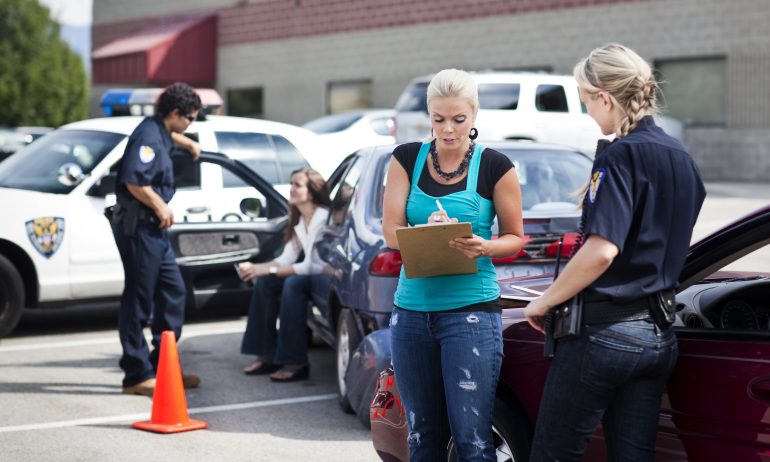What to Do After a Car Accident

Many or all of the products featured here are from our partners who compensate us. This influences which products we write about and where and how the product appears on a page. However, this does not influence our evaluations. Our opinions are our own. Here is a list of our partners and here's how we make money.
Accidents happen, even to careful drivers. The first thing to do after you’ve been in one? Try to remain calm. The post-accident process is fairly straightforward, but it’s not always easy. Keeping a cool head will help you document the wreck thoroughly and accurately.
Follow these steps to ease the stress after a crash, and make the potential claims process more efficient.

See what you could save on car insurance
Easily compare personalized rates to see how much switching car insurance could save you.1. Check for injuries and move to a safe area
Immediately determine if anyone is injured. If so, call 911 to get an ambulance and police on the scene. Even if the incident was minor and the other driver is cooperative, calling the police is required in some states. Besides, that way you’ll have an official report to give to your insurance company, which it’ll likely ask for.
If the vehicles involved are still operational, get them to the shoulder or off the main road and turn on the hazard lights. Make sure to pull completely off the road to avoid being hit by approaching vehicles. If you have flares or reflective emergency triangles, set them up to warn other drivers. If there appears to be a danger of explosion, get everyone away from the vehicle to a safe place off the road.
2. Exchange information
Generally, you need to provide only your name and your insurance information to any other drivers involved. While you might want to hash out the details of the crash with the other driver, it’s best to limit your interaction so you don’t admit guilt, blame the other person or let the other driver know what your insurance policy limits are.
The information you should try to collect includes:
Name and insurance information of the other driver, including the policy number and insurer’s phone number.
The other driver’s telephone number, if they are willing to provide it.
Witness contact information.
Police report number and a copy of the police report if possible.
Police officer’s name and badge number.
» MORE: What is auto insurance?
3. Document the crash
You’ll want to diligently document the scene of the accident. Here’s a list of everything you should capture:
Photos of all damage, including any to the other driver’s car.
Photo of the other driver’s license plate.
Date and time of the accident.
Personal notes on what happened, including the speed you were driving and road conditions. If you can, draw a diagram of the scene and how the accident occurred, including the direction each vehicle was traveling.
Some insurance companies, including Geico and Allstate, offer free smartphone apps to help you document the details of a crash.
4. Decide whether to file a claim
If the accident was your fault, you’re not required to file a claim. But be aware that even an accident that seems minor could be costlier than you think.
If the accident wasn’t your fault, you’re responsible for filing a claim with the at-fault driver’s insurance company. Call your own insurer first — they may file the claim with the driver’s insurer on your behalf.
You might still have to use your own insurance, even if a crash was another driver’s fault. If that’s the case, file a claim with your insurance company and be prepared to pay a deductible. Your insurer will communicate with the other driver’s insurance company and refund your deductible if needed.
How insurance pays out after an accident
How the insurance claims process shakes out after a car accident depends on who was at fault and the types of coverage you and the other driver have.
If another driver is at fault
Assuming you are not a passenger in their car, the at-fault driver’s auto insurance will pay for:
Damage to your car, up to the other driver’s property damage liability limits.
Your medical bills, up to the limits of their bodily injury liability coverage, which is required to drive legally in most states. Some states are considered “no-fault” states. If you live in one of those, your own policy’s personal injury protection would cover your medical expenses.
If the other driver doesn’t have insurance or doesn’t have enough coverage to pay the entirety of your bills, your own insurance policy’s uninsured or underinsured motorist coverage would pay out if you have it.
If you’re at fault
Depending on your policy, your own insurance will cover:
Injuries to the other driver and any passengers in their car, up to the limits of your policy’s bodily injury coverage, but this coverage won’t pay for injuries your own passengers sustain. If the accident occurred in a no-fault state, the other driver’s no-fault insurance (if they have it) may cover their medical expenses.
Damage to the other driver’s car, up to the limits of your property damage liability coverage.
Damage to your own car if you have comprehensive and collision insurance. Your car will be covered up to its current market value after you pay your deductible.
Your medical expenses that are a result of the crash, up to the limits of your medical payments or PIP coverage. After that, you’ll need to work with individual health insurance for any other medical expenses you and your passengers incur.
Your insurance might also pay for a rental car for the other driver if their vehicle needs to be in the shop.
Optional coverage that can help either driver
Here are some optional coverage types that may be useful after an accident if your policy includes them:
Emergency roadside assistance will come in handy if you need a tow to the repair shop.
Rental car reimbursement coverage pays for a rental while your vehicle is being repaired, whether you’re at fault or not.

See what you could save on car insurance
Easily compare personalized rates to see how much switching car insurance could save you.Car insurance rates can increase after a crash
A crash can cause your car insurance rates to go up significantly. A recent NerdWallet analysis found that car insurance rates after an accident can go up 51% per year on average. Some insurance companies offer accident forgiveness, which prevents an at-fault accident from resulting in higher premiums.
If you’re worried your rates will increase after a crash, shop around and compare quotes from multiple insurance companies to find cheap car insurance.
» MORE: Compare auto insurance
On a similar note...


